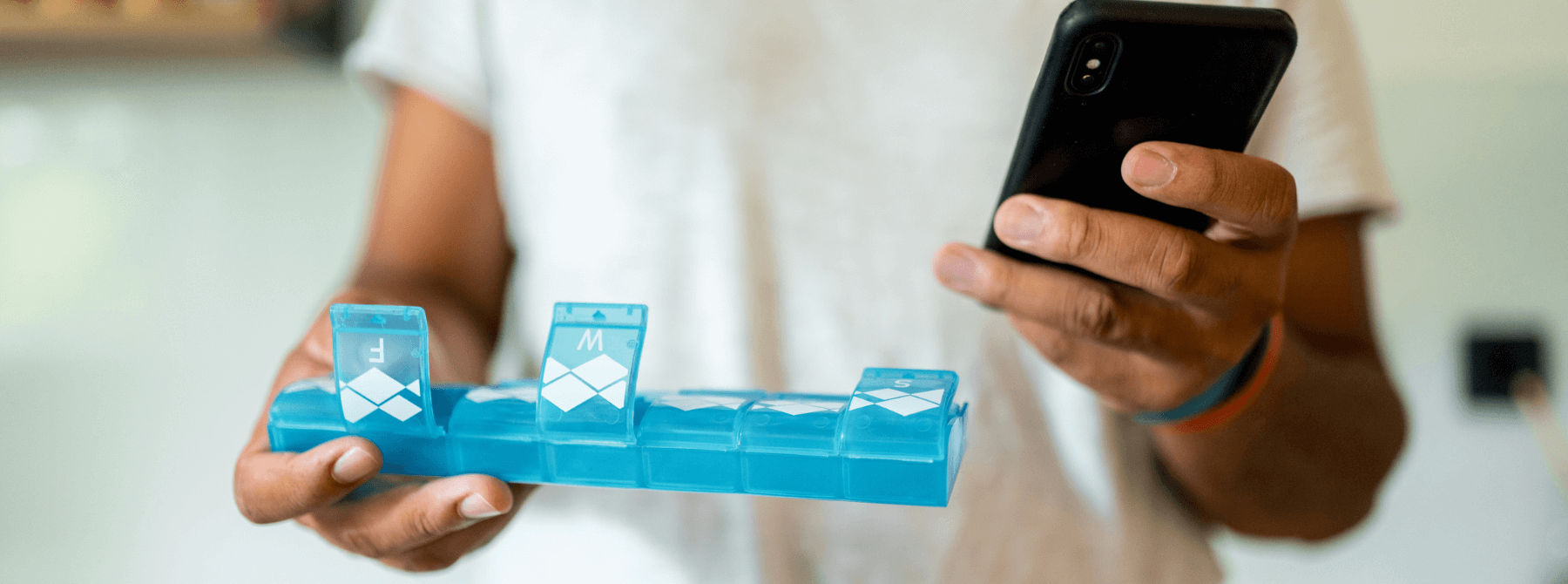
10 Ways to Drive Adoption for Your mHealth App
Technology can be a powerful tool to manage chronic illness, but only if patients are willing to use it. This is why creating an effective “mHealth app” takes a lot more than technical skills.


An mHealth app is any computer-based intervention that takes place via a connected device, web, texting, native app, or any combination thereof. The convergence of certain healthcare trends over the past few decades has created a rich opportunity for the development of mHealth apps—the most successful of which are designed around a deep understanding of the behavioral psychology behind patient choices and motivations.
In a recent Rightpoint POV, I outlined the ten design characteristics that are essential to driving adoption of an mHealth app. Adoption is the key to success when it comes to significantly impacting patients’ lives, so it’s critical to get it right.
Business Environment
Your ultimate goal is to help patients, but you need to start with a strong business model. You need to consider the difference between fee-for-service and value-based care. And you need to think about how you will monetize your app so it’s sustainable over the long term.
Results
If you don’t know where you’re going, you probably won’t get there. The secret to achieving your goals is to define your intended results in great detail, and then reverse engineer your design so your app is tailored to deliver those details exactly.
Empathy
Health is a deeply personal issue. To be able to help someone manage their health, you have to understand their behavior and the psychological reasons that may be keeping them from maintaining their health. Build a knowledge base about patients as a broad population and as individuals. Use all the resources at your disposal—academic research, focus groups, user panels, etc.—to create a detailed picture of your audience. Get to know them and care about them.
Behavioral Psychology
When designing an app to help patients improve their health, it’s critical to understand the barriers that are keeping them from making good choices. From the “ostrich effect” of ignoring health issues to the “ambiguity aversion” that keeps patients from initiating treatment because it represents unknown risks, there are many different types of roadblocks. Understanding which ones affect your patient population is the only way you’ll be able to determine which kind of behavior change model will be most effective in your app.
Innovation
People naturally get excited about new devices and technology. This tendency to engage with shiny new objects can work to your advantage, but you have to understand its limitations. While a sleek new product or cool new way of communicating might grab patient attention for a while, that honeymoon phase typically only lasts three to six months.
Motivating Patients
Getting patients to integrate app use into their regular routine is a non-negotiable element of initial and ongoing success. This is all about knowing what to say, how to say it, and getting the timing just right. From identifying key teachable moments to refining your onboarding process to developing and delivering motivational messaging, each time patients engage with your app is a chance to motivate them to do the right thing. Artificial intelligence, machine learning, incentives, and social pressure are all tools that you can use to guide and influence patient behavior toward the results you want to achieve.
Integration with Providers
Providers have limited time and resources to spend on technical projects, so being able to integrate seamlessly into their existing systems is a must-have feature. Depending on your app’s purpose and complexity, integration might include communicating with doctors and other providers, connecting to EMR data, displaying patient data in the EMR, or emergency automation to alert providers to anomalous readings. With any integration, the goal is to reduce friction as much as possible so that you are not creating extra steps for either the patient or their healthcare team.
Marketing/Promotion
Spreading the word about an mHealth app requires a strategy that considers the deeply intimate nature of a patient’s health. People will accept movie recommendations from almost anyone, but when it comes to health, they will only take advice from someone they really trust, like a doctor, family member, friend, or member of the community.
Data Privacy and Security
Because medicine is one of the most highly regulated sectors of the global economy, there are many regulations to consider. Most people are familiar with the HIPAA and HiTECH Act help, which ensures that patient information is protected. But you may not realize that many mHealth apps are regulated as a “medical device,” and so must also comply with rules and regulations for FDA Class I, II, III, CE Mark and ISO 13485 certification.
Post-launch App Refinement
Finally, remember that your launch is the starting line, not the finish line. No one gets it perfect right out of the gate, and—more importantly—every piece of data you collect is an opportunity to enhance the patient experience and outcomes. By looking at everything from usage (logins, views, clicks, etc.) to collected data (biometrics, demographic information, survey responses, etc.), you can uncover insights that will help you refine and evolve your app strategy. And, as time goes on, you can incorporate artificial intelligence, machine learning, and deeper analysis via data scientists. Deep Understanding Is the Heart of Your mHealth App
Only by taking the time to truly understand patient needs, motivations, and psychological behaviors can mHealth developers establish a strong foundation and build lifesaving apps that patients love.


